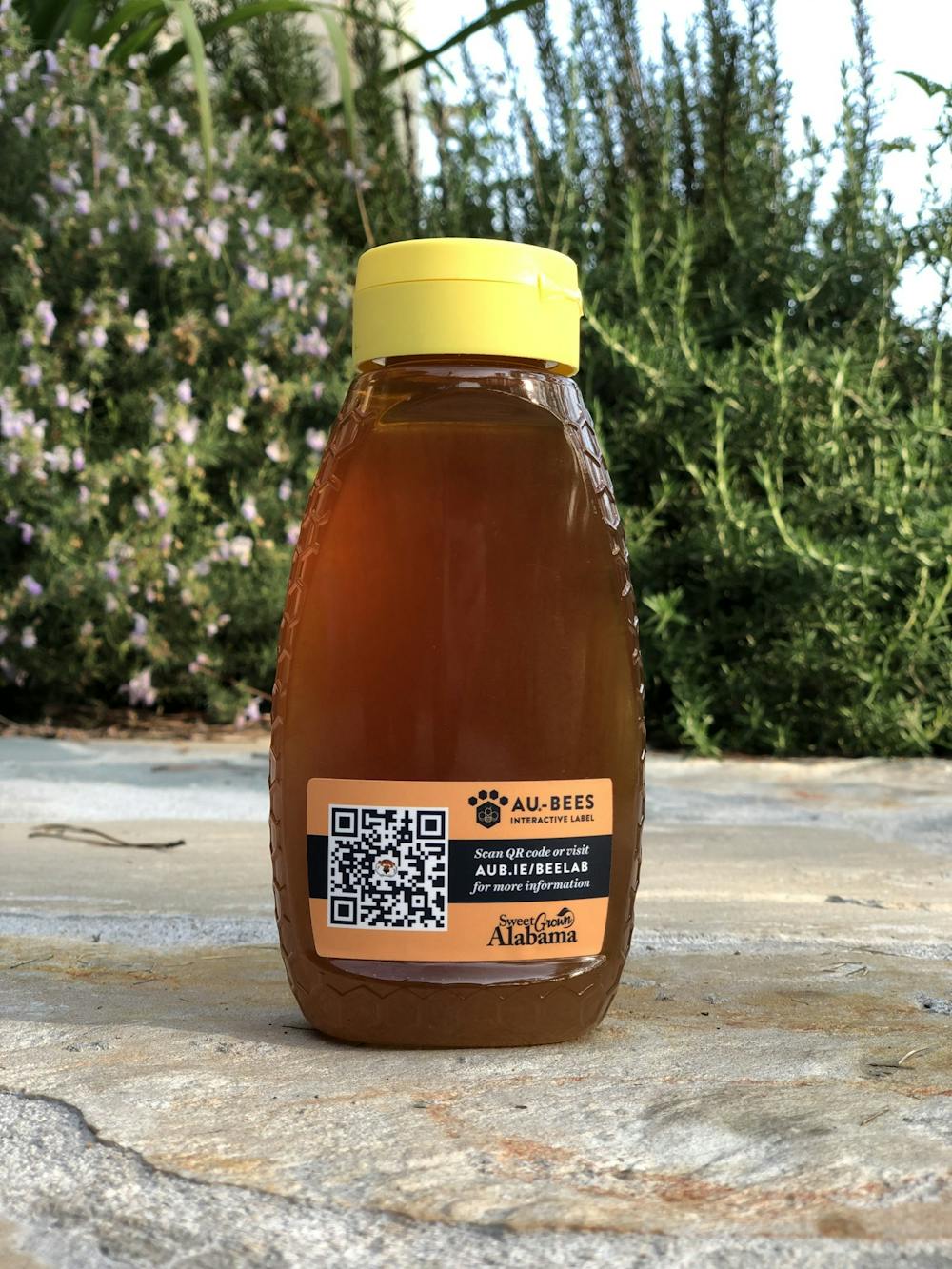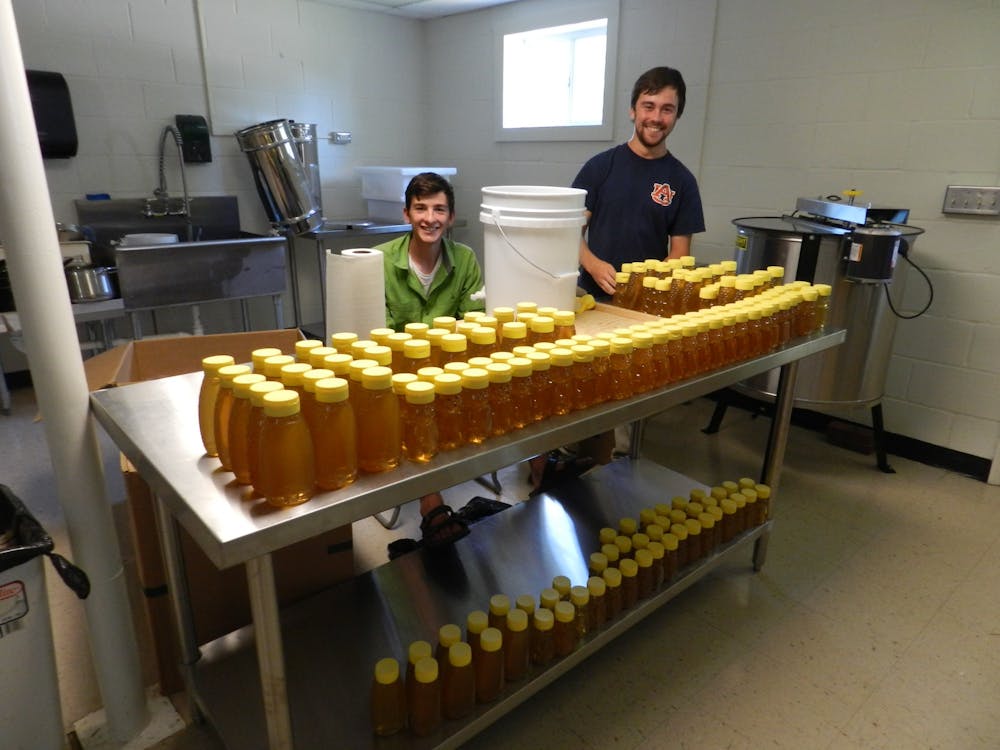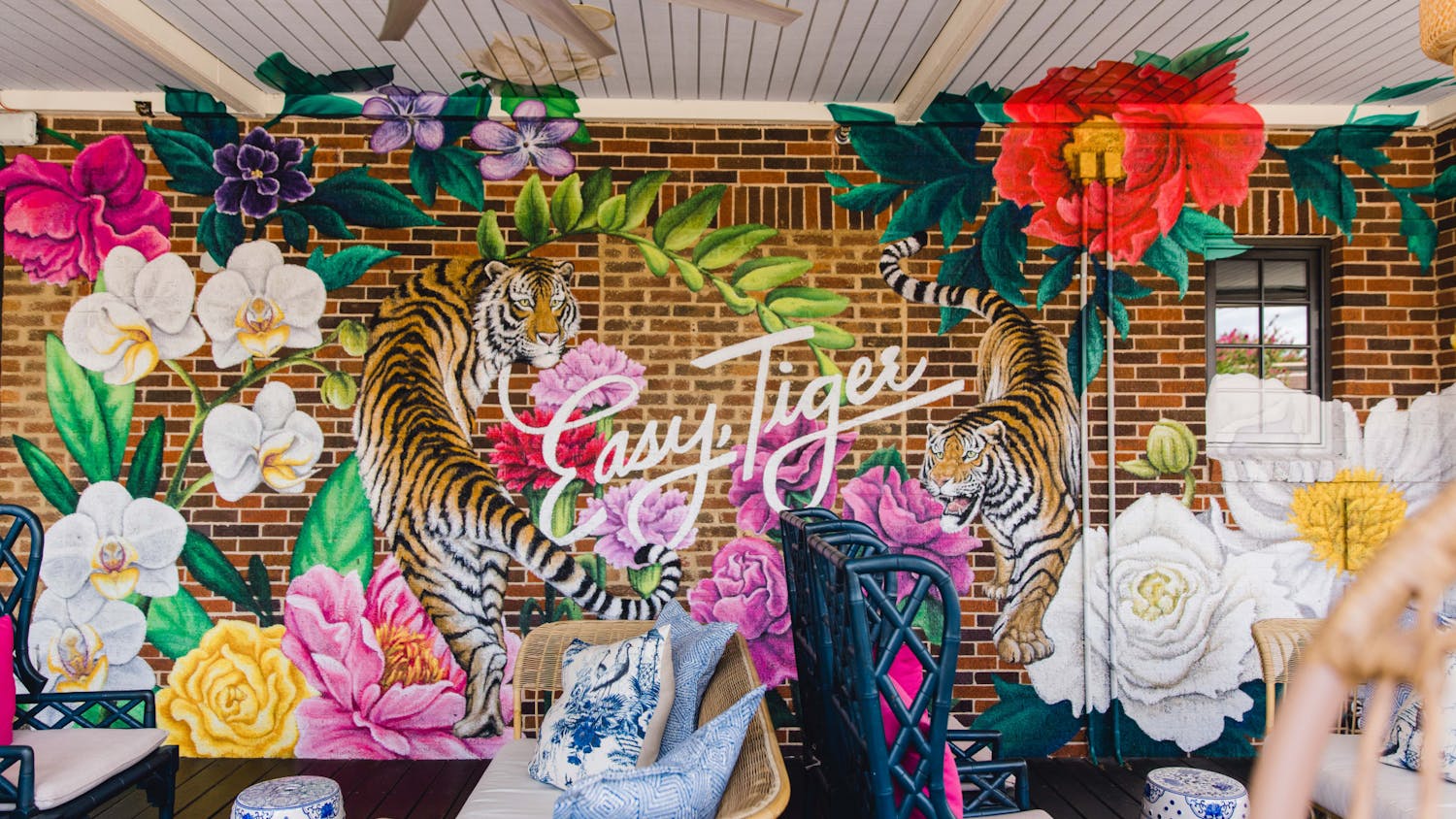The primary purpose of Auburn University’s Bee Lab, according to assistant professor Geoffrey Williams, is research and instruction. Housed in the Department of Entomology and Plant Pathology, the Bee Lab’s charge is to promote bees through research, teaching and outreach.
However, in order to support its efforts in research and instruction, the Bee Lab sets aside certain apiaries, or plots of land with bee colonies, for the production of honey. These apiaries are scattered across Auburn’s campus, and some may even be owned by Auburn residents.
“We have the Bee Lab, a physical structure, but then we also have a Bee Lab as our bee yard, or apiary, where we keep bees,” Williams said. “So that’s what we call the Bee Lab yard. But we do have several other yards scattered within 10 miles of campus. Some of those yards are only used for research, some are used for honey production, and some are used for both.”
This year, the apiaries allotted for honey production were the Bee Lab’s home apiary, the colonies maintained by Raleigh and Jane Jones, and the colonies maintained at the Mary Olive Thomas Demonstration Forest. Combined, they produced more honey this year than in years past.
“We’ve got about 1,500 pounds of honey this year,” Williams said. “I would say this year is more than usual. It really depends on the number of colonies we have available … our primary focus is research, outreach and instruction, but sometimes we can take advantage of putting more colonies in our honey yard, so to speak.”
According to Williams, the production season of honey by bee colonies in Alabama finishes around the end of July, which is when most natural and introduced plants around the area stop blooming.
“In Auburn, the end of the nectar flow as we call it, is the beginning of July,” Williams said. “[The nectar flow] ends when the tree Chinese Tallow stops blooming. It’s actually an invasive species here … but it’s a really great nectar plant for bees.”
For the Bee Lab, staff usually begin harvesting and production of honey around this time, but this year, a few things slowed them down, Williams said. While COVID-19 was a factor, the Bee Lab also spent time working on a new interactive label for the back of their honey bottles.

Auburn's Bee Lab features interactive labels on the back of its honey bottles.
“Our front label is pretty standard, we always have the year of when it’s produced, but [for] our back label … we have this interactive label on the back,” Williams said. “So if you were to buy that and scan [the label], it’ll take you to a specific page for where this honey is coming from.”
According to Williams, the interactive label on the back of the bottle is the Lab's way of connecting with its customers and the community to show that the honey the Bee Lab makes is truly local.
“You’ll know roughly where the colony was and where [the colony] was collecting the nectar and converting it into honey,” Williams said. “You’ll know who was managing those colonies, who are all Auburn personnel and students.”
Customers will even know the water content of the honey, which Williams said is important. In order to be truly called honey, the percentage of water in the honey needs to be below 18.5%.
If done right, the production and collection of honey each year is relatively unobtrusive to the bee colony. The process begins in the springtime, when beekeepers add additional boxes to the colony on top of the existing boxes, which are called brood boxes.
These new boxes that are added on top are called the “honey super,” and they are where the bees will store the nectar which eventually becomes honey, Williams said. In order to keep the queen from laying eggs in the honey super, a “queen excluder” is added between the honey super and the brood boxes.
“[The queen excluder] is essentially a grate to stop the queen from moving up,” Williams said. "The purpose of this is to keep the queen stuck in the bottom boxes, the brood boxes, and then the bees above the queen excluder will only store nectar up there. When the beekeeper comes to extract the honey, they’re only dealing with honey and not developing bees in these cells.”

Auburn students bottle the honey extracted from the honey supers.
According to Williams, the bees convert the nectar they forage from flowers into honey by dehydrating and adding enzymes to the nectar.
“Honey is the carbohydrate source of the honey bees, so that’s the energy source,” Williams said. “They’re storing away all this honey for future use. A good beekeeper will come along and take a portion of that honey from those supers. They won’t take all the honey … because we realize that the honey is important for the honey bees to survive in the wintertime.”
Beekeepers will then take the frames from the honey super to a giant centrifuge, according to Williams. The centrifuge will spin the frames around, and all the honey will be extracted. After straining, the honey production is finished, Williams said.
Honey is essentially a combination of two simple carbohydrates, fructose and glucose, which are broken down forms of sucrose, according to Williams. The differing ratios of these two sugars in honey can change both the honey’s color and taste.
“If you see different honey, sometimes they’re different colors, they taste differently,” Williams said. “Something that causes that different taste is the ratio of the fructose and the glucose [in the honey].”
The Bee Lab’s annual honey sale week is going on right now, and it encourages anyone interested to visit their webpage or social media.
Do you like this story? The Plainsman doesn't accept money from tuition or student fees, and we don't charge a subscription fee. But you can donate to support The Plainsman.





